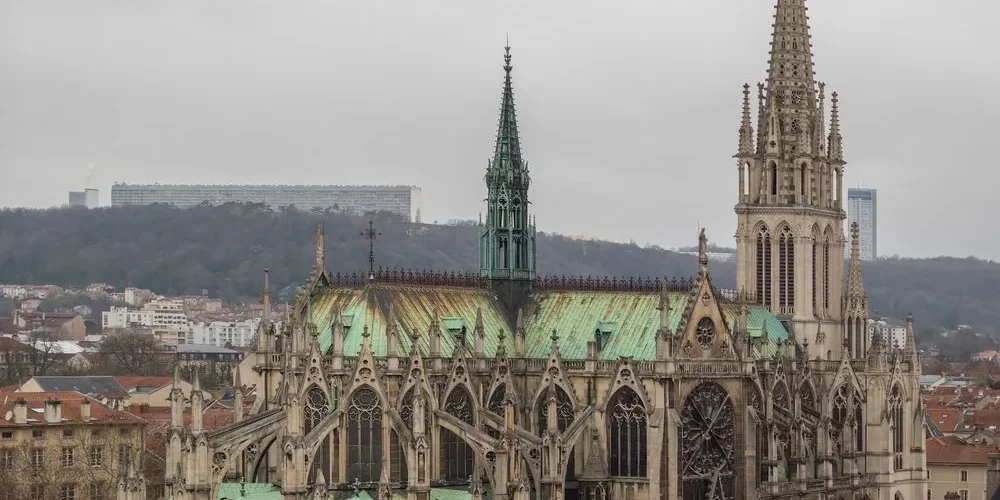Introduction
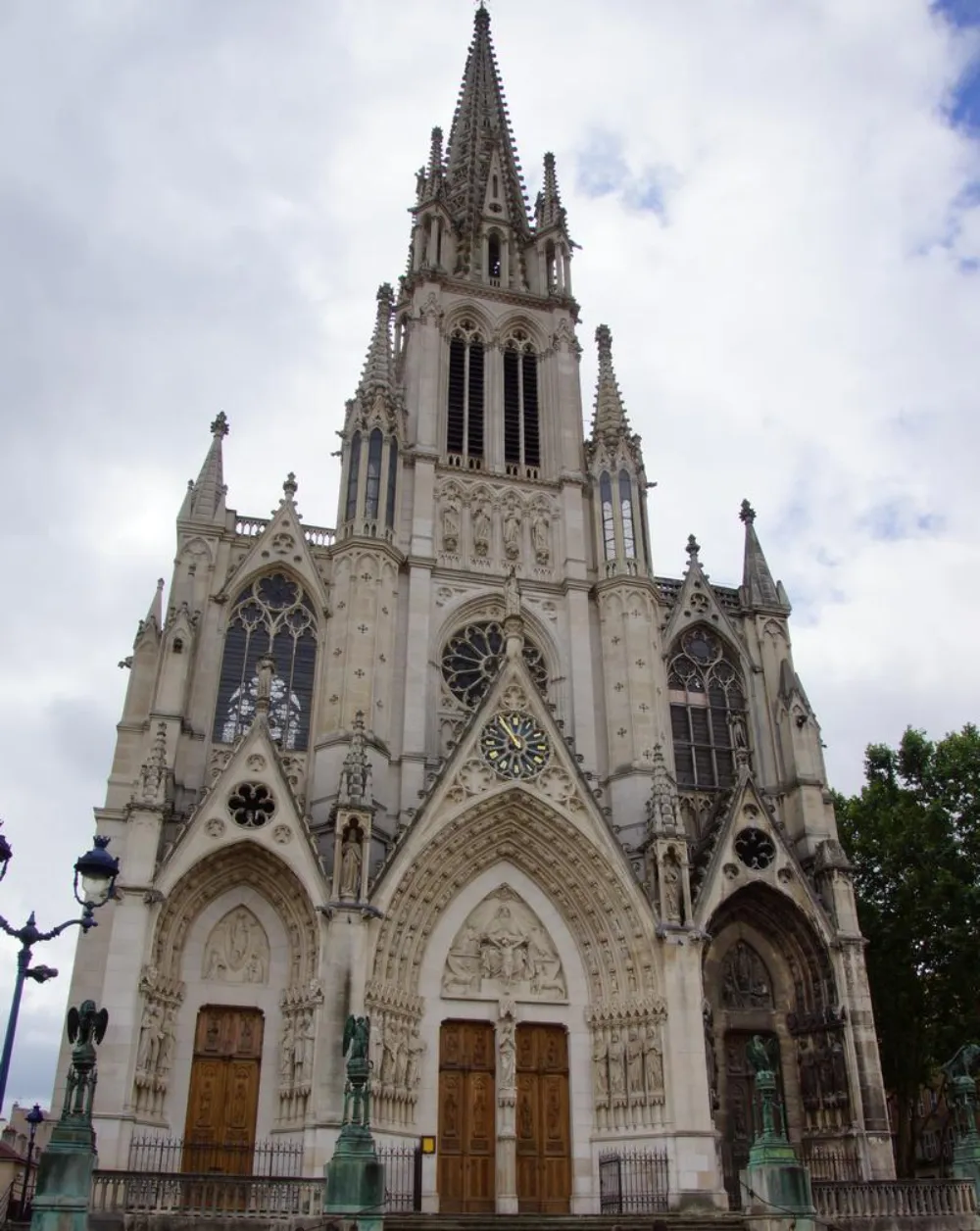
The Saint-Epvre Basilica [sɛ̃.t‿ɛvʁ] in Nancy, France, is a basilica from the Rayonnant neogothic style, built in the 19th century by the architect Prosper Morey. The basilica, being the third church built in this location since the foundation of the Saint-Epvre parish in 1080, is dedicated to Saint Epvre, the Aprus of Toul, whose relics are kept within a shrine in the altar. It was sometimes called Saint-Épure, until the end of the 19th century.
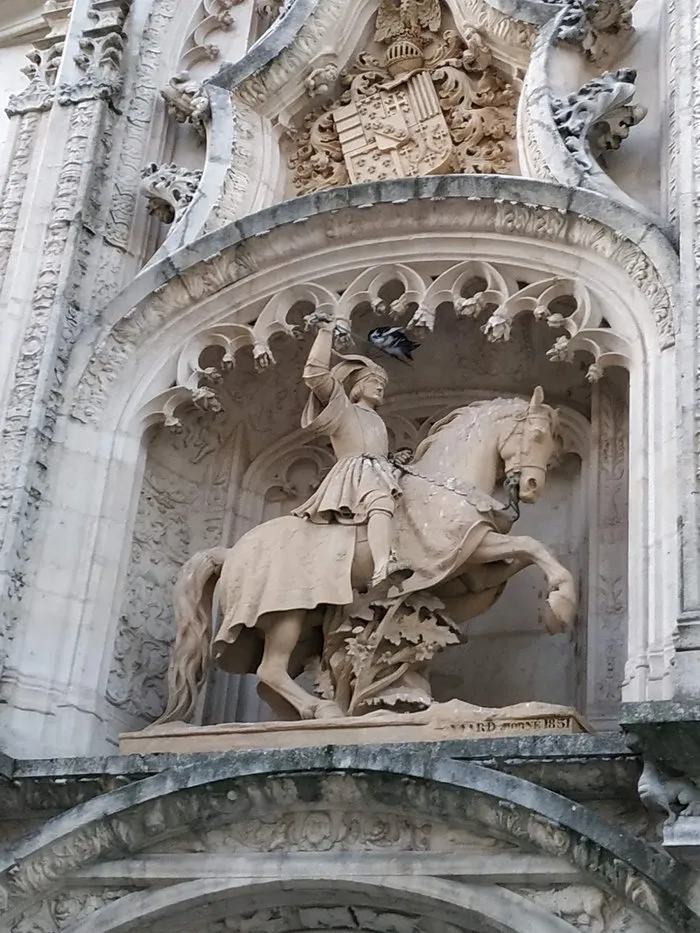
The Duke Thierry II de Lorraine settled the parish church in 1080. Between 1436 and 1451, the edifice is rebuilt in the flamboyant gothic style, and the church spire was also used as a watch tower, because it was the highest viewpoint in the medieval town. The construction of the new church in the second part of the 19th century, was based on a competition in 1862, arbitrated by a commission in Nancy then by the Commission des Bâtiments Civils in Paris. This commission was composed of members such as Alphonse de Gisors and Hector-Martin Lefuel. It is Prosper Morey’s design that was chosen, although the architect had withdrawn his own project from the competition.
The church was demolished in 1863, the spire-watch tower that was supposed to be integrated to the new church lasted only a couple of years and then was knocked down in 1867. The foundation stone was lain in May 1864. In 1865, Joseph Trouillet received donations to finance the construction of this prestigious project, he was even supported by François Joseph Charles de Habsbourg-Lorraine who visited the building site on October 22, 1867, with his two brothers, Charles-Louis et Louis-Victor. With their help, Monseigneur Trouillet required the support of Napoléon III and won over the old lorraine nobility’s … which awarded him with the nickname « king of the beggars and beggar of the kings ». The church was consecrated in 1871 by the bishop of Nancy, Joseph Foulon.
On November 26, 1874, the church is granted the title of Minor Basilica by the Pope Pius IX. The construction was finished in 1875. During the First World War, bombs were dropped on Saint-Epvre basilica. During the night, from the September 25 to 26, 1914, a German airship dropped 18 bombs on the old part of town, which gravely damaged the church, destroying the roof in some places, and a part of the stained glass panels.
In September 1916, the priest Trouillet added a plate in the memory of Prosper Morey, inside the basilica. In 1996, the parish was entrusted to the care of the Oratoire congregation, from Saint Philip Neri. Saint-Epvre basilica was listed as a historical monument in 1999. Because of the cyclone Lothar in 1999, and due to pollution, different renovation campaigns have taken place over the years. In December 2012, the basilica hosted the wedding of the archduke Christophe of Habsbourg-Lorraine (born in 1988), the son of Charles-Christian de Habsbourg-Lorraine and a descendant of the dukes of Lorraine, with Adélaïde Marie Beatrice Drapé-Frisch (born in 1989). On December 15, 2013, during a pontifical mass, a relic from Charles Ier de Habsbourg-Lorraine was brought to the basilica.
The idea of reconstructing the edifice in a neo-gothic style was not unanimous, and some critics were heard even before the architectural competition was launched. The opponents were against neo-gothic style, which was criticized in a polemical publication in 1859. The competition for the creation of the basilica, opposed in 1862 Léopold Gigout, Louis Sainte-Marie Perrin and Prosper Morey. Out of the nine projects presented, it is the sixth, by Gigout, that was awarded a gold medal and a prize of 2000 francs. However, the rules made it possible for the city council to appoint the architect of its choosing. It was then Prosper Morey who was chosen by the mayor, Baron Buquet, who admired his work. The project was accepted on April 19, 1863, and Prosper Morey presented his architectural designs for the Saint-Epvre basilica, to the Salon des Beaux-Arts, in 1863.
Architecture of the Basilica of Saint Epvre of Nancy, Nancy, France
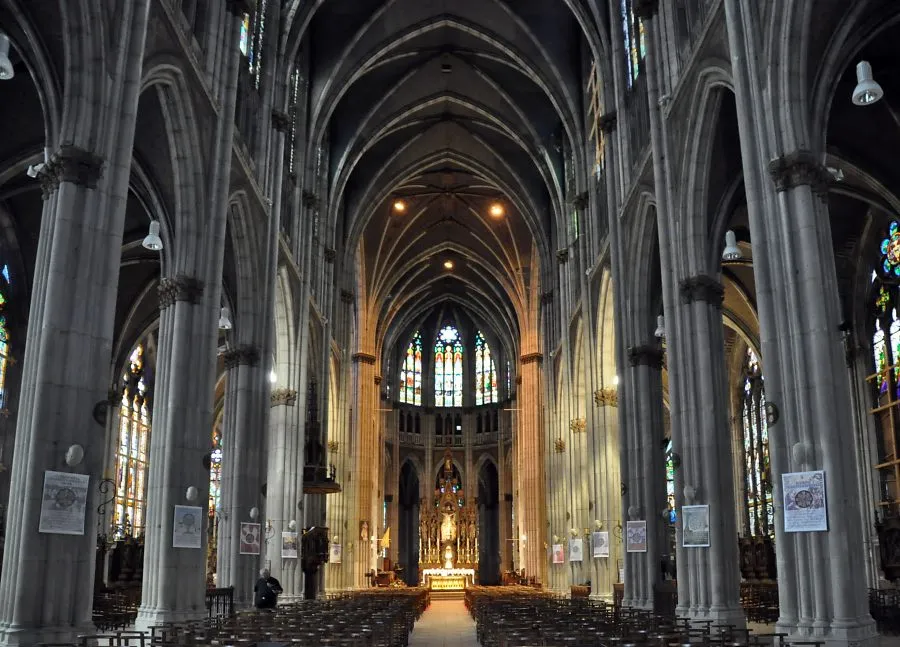
Architect: Prosper Morey
Architectural Style: Flamboyant gothic
Situated in the heart of the Old Town of Nancy, Meurthe-et-Moselle, Saint-Epvre Basilica is a breathtaking example of neo-Gothic architecture. Constructed in the 19th century on the site of a 14th-century church, the basilica was designed by the renowned architect Prosper Morey, a winner of the prestigious Prix de Rome. The basilica was blessed in March 1871, shortly before the addition of its striking 87-meter arrow on the transept, complementing the building’s length of approximately 100 meters and a nave that reaches 24 meters high. This impressive design earned accolades from notable figures such as Eugène Viollet-le-Duc.
Visitors are enchanted by the basilica’s numerous features, including 74 skylights and three magnificent rose windows that illuminate the interior. The stained glass windows, crafted in Austria, and exquisite Bavarian woodwork contribute to the basilica’s charm. The nave is adorned with beautiful paintings and mosaics, while the entire space is furnished with elegant Viennese furniture. Significantly, the monumental staircase is a gift from Emperor Franz Joseph I of Austria, who, along with his wife, is represented in the windows through the figures of St. Francis and St. Elisabeth. Additionally, stained glass windows depicting Saint Louis and Saint Eugénie were offered by Napoleon III and Empress Eugénie. Today, Saint-Epvre Basilica is classified as a Historic Monument, attracting visitors who admire its architectural grandeur and rich historical significance.
Organs
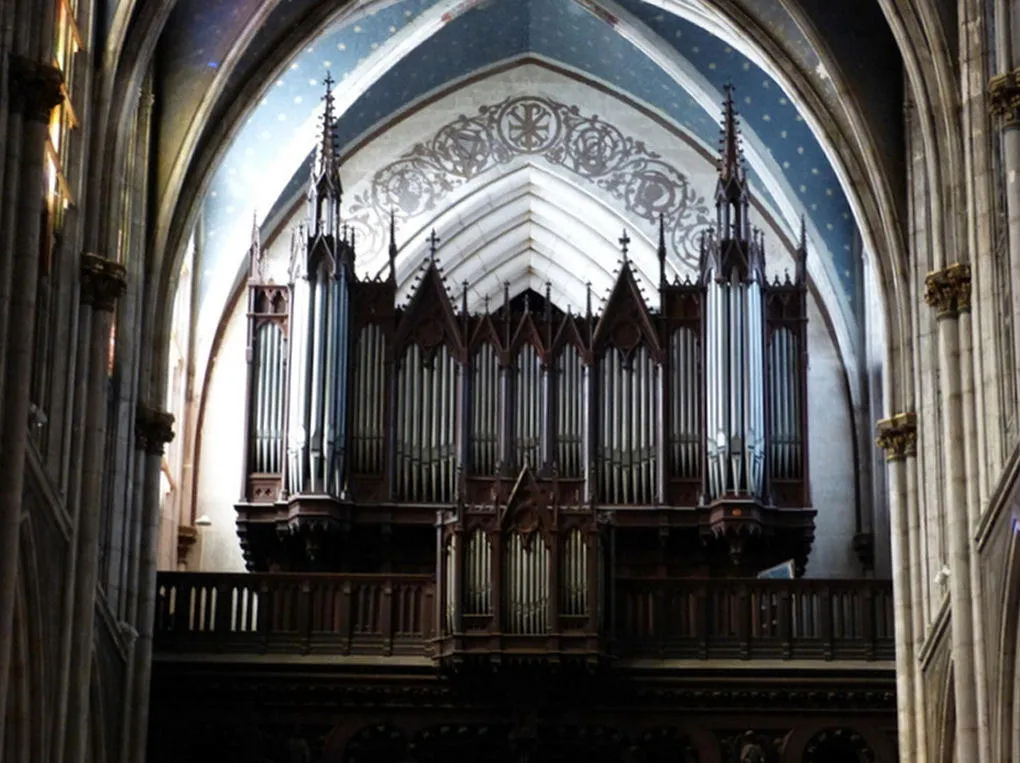
The Organs of the former St. Epvre were sold for the church Dannelbourg. The great neo-Gothic organ (forum) were built by the postman Joseph Merklin (company “Merklin-Schütze”) and inaugurated by Anton Bruckner. This organ was rewarded with a gold medal at the Exposition Universelle in Paris in 1867 where he was played by the most famous Parisian organists. The organ was restored in 1992 by the Manufacture of Lorraine Great Organs Haerpfer under cover of Historical Monuments. During this work the additional blower (to compensate for the wind gaps) added at the end of the nineteenth century, specifically between 1877 and 1893 by Jean Bleší was removed, and the additions of three high notes pedal (to switch the pedals 27 to 30 notes) and a bumblebee game 8 (pedal) posed in 1926 by Théodore Jacquot. tribune of the organ of St. Epvre is with the great Cavaillé-Coll organ of the Cathedral, the Dalston-Haerpfer San Sebastian and Didier Saint-Nicolas, one of the great representatives of organ Symphony in Nancy. The basilica also has a “choir organ” also built by Joseph Merklin. This instrument has long been unusable as a homeless had turned into makeshift shelter, greatly spoiling the piping. This instrument was restored in 2009 by Jean-Baptiste Gaupillat factors and Laurent Plet.
Feast Day
Feast day: 15 September
The annual feast day of Basilica of Saint Epvre of Nancy, Nancy, France, is celebrated on September 15 each year.
Church Mass Timing
Saturday : 6:30 PM (except July-August)
Sunday : 9:30 AM and 11 AM
Church Opening Time:
Monday : Open 24h
Tuesday : 9:30 am – 12:00 pm
Wednesday : Open 24h
Thursday : Open 24h
Friday : 9:30 am – 12:00 pm
Saturday : Open 24h
Sunday : Open 24h
Contact Info
Address :
Pl. Saint-Epvre, 54000 Nancy, France
Phone: +33383190086
Accommodations
Connectivities
Airway
The Nearest Airport to The Church of Basilica of Saint Epvre of Nancy, Nancy, France, is, Aéropôle Grand Nancy Tomblaine, 5 Av. Nelson Mandela, 54510 Tomblaine, France, which is just 14 min (5.7 km) via Rue Alexandre 1er/D32A away from the basilica.
Railway
The Nearest Railway to The Church of Basilica of Saint Epvre of Nancy, Nancy, France, is, 3 Place Thiers, 54000 Nancy, France, which is just 6 min (1.0 km) via Rue Stanislas/D400 away from the basilica.

